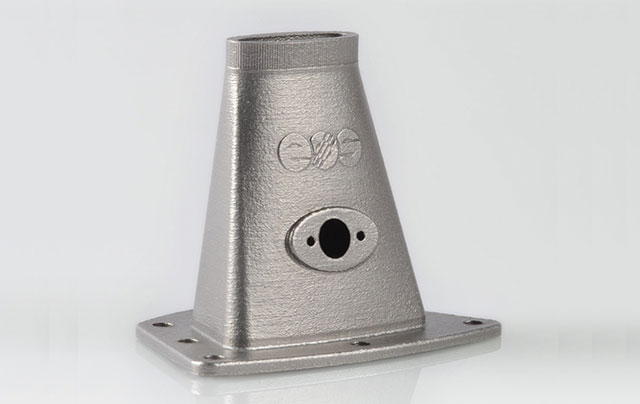EOS, the German based manufacturer and supplier of industrial 3D printers that utilize its proprietary laser sintering process, has announced new materials for both the plastic and the metal platforms. On the plastics front, EOS has introduced two new materials — PrimePart ST (PEBA 2301) and PrimePart FR (PA 2241 FR). For the Direct Metal Laser Sintering (DMLS) platform, EOS has announced the immediate commercial introduction of EOS NickelAlloy HX.
PrimePart ST is a soft, flexible and elastic material categorized as a thermoplastic elastomer and is available immediately for the EOSINT P 395 systems. In the coming months, it will also be made available for the EOS FORMIGA P 110 and EOSINT P 760 systems. PrimePart® ST was developed to support the production of flexible, rubber-like parts — optimized to ensure that parts will return to their original shape, even after significant deformations. Furthermore, post-production infiltration is not necessary for achieving excellent mechanical properties and surface qualities. In the temperature range of -40 to 90°C the PrimePart ST material demonstrates a very good fatigue performance, according to EOS. PrimePart FR is a flame-retardant Polyamide 12 material and is available now for both the current EOSINT P 395 and P 760 systems, as well as for the EOSINT P 390 and P 730. The material has been specifically developed for applications in the aerospace sector with a tensile strength of 49 MPa and an elongation at break of fifteen percent. This means that PrimePart® FR exceeds the extremely successful PA 2210 FR, which, until now was the only flame-retardant PA 12 material in the EOS portfolio. Typical applications in the field of airplane interiors would include ventilation ducts and outlet vents.

In a further development in line with client feedback, the EOS NickelAlloy HX material is a heat and corrosion resistant nickel-chrome-iron-molybdenum alloy, which distinguishes itself through a high degree of strength and its resistance to oxidization, even at high temperatures. For this reason it will see frequent application in temperatures up to 1200ºC. The material is optimized for processing in the EOSINT M 280 metal system, and is typically processed with a layer-thickness of 20 µm.



